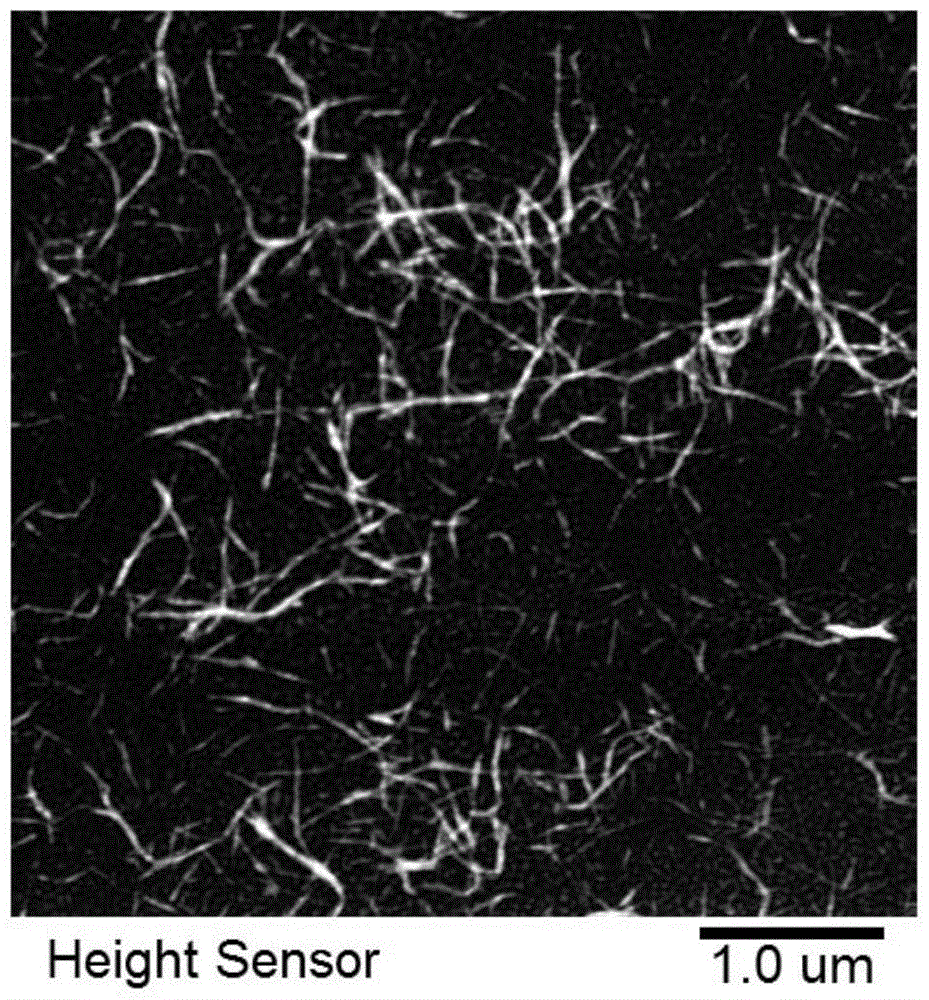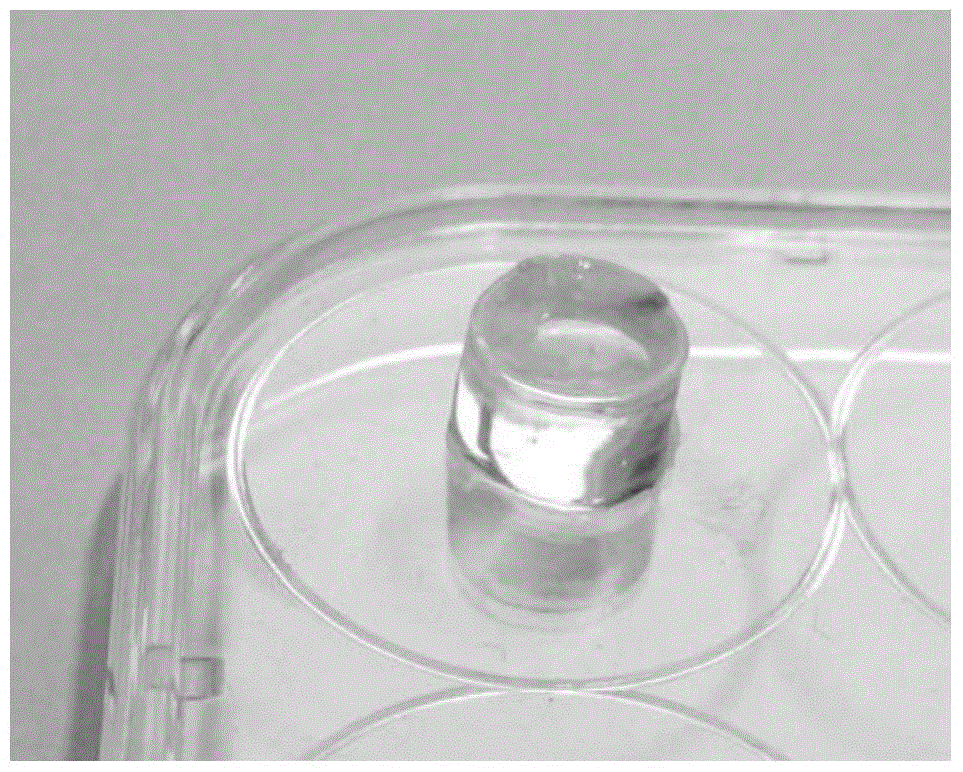Functional self-assembled nano-peptide hydrogels
A self-assembly, multi-functional technology, applied in medical science, prostheses, etc., can solve the problems of vascular endothelial cells that do not simulate VEGF fragments, low efficiency, and limited cell functions, and achieve the effect of promoting cell adhesion
- Summary
- Abstract
- Description
- Claims
- Application Information
AI Technical Summary
Problems solved by technology
Method used
Image
Examples
Embodiment 1
[0033] Embodiment 1, design and synthesis of polypeptide
[0034] 1.1. The sequence of ion-complementary self-assembled nanopolypeptide RADA16-I: Ac-(RADA) 4 -NH 2 , which can ensure the self-assembly of the peptide solution after mixing.
[0035] 1.2. The RGD short peptide sequence Arg-Gly-Asp widely exists in various extracellular matrix proteins such as cohesin, and specifically binds to integrin on the cell membrane, which is a key binding site for cell attachment. RADA16-I The carboxy-terminal synthetic functional fragment RGD short peptide sequence is the RGD functional polypeptide used in the present invention, and its sequence is Ac-RGD-(RADA) 4 -NH 2 .
[0036] 1.3. The VEGF mimic polypeptide fragment GGGGGKLTWQELYQLKYKGI, as an analogue of VEGF, mimics the helical region of 17-25 interval of VEGF. This region is capable of activating VEGF receptors, thereby activating VEGF-related cell signaling pathways including vascular endothelial cell proliferation. The ca...
Embodiment 2
[0038] Example 2, Preparation of Polypeptide Solution and Atomic Force Microscope Detection
[0039] The three synthetic peptide powders of RADA16-I, KLT and RGD were respectively dissolved in biological grade deionized ultrapure water to obtain three peptide solutions with a mass concentration of 10g / L (1%). Sonicate for 15 minutes to dissolve the peptide completely. After designing a large number of experimental groups to study the self-assembly gel effect of various ratio mixing methods, it was determined to mix according to the molar ratio of RADA16-I:KLT:RGD=2:1:1. Mix the aqueous solutions of RADA16-I polypeptide, KLT functional polypeptide and RGD functional polypeptide at a molar ratio of 2:1:1 and ultrasonically mix to obtain a mixed polypeptide solution (RADA16-I / KLT / RGD), which is ready to be used to prepare functional Self-assembling peptide hydrogels. The mixed polypeptide solution was quickly filtered and sterilized with a 0.22 μm sterile filter for use. After...
Embodiment 3
[0040] Example 3. Preparation of functional self-assembled polypeptide hydrogel and observation of gel microstructure by scanning electron microscope
[0041] 3.1. In order to assemble into a complete hydrogel with a certain shape, this study uses a transwell chamber to complete the self-assembly induced by saline solution. Put the required number of transwell chambers into a 24-well culture plate with 400uL of 0.01M PBS buffer per well, and put the culture plate in a 37°C incubator overnight to permeabilize the basement membrane of the transwell chambers. Then suck out the permeated liquid in the transwell chamber, add 100 μL of mixed polypeptide solution (RADA16-I / KLT / RGD) into the chamber, and then incubate at 37°C (this temperature can accelerate gel formation) for at least 1 hour to form a gel. After the gel was formed, take out a small chamber, carefully cut off the basement membrane and take out the gel, fixed with 2.5% glutaraldehyde for 30 minutes, dehydrated with gra...
PUM
| Property | Measurement | Unit |
|---|---|---|
| diameter | aaaaa | aaaaa |
| length | aaaaa | aaaaa |
| size | aaaaa | aaaaa |
Abstract
Description
Claims
Application Information
 Login to View More
Login to View More - R&D
- Intellectual Property
- Life Sciences
- Materials
- Tech Scout
- Unparalleled Data Quality
- Higher Quality Content
- 60% Fewer Hallucinations
Browse by: Latest US Patents, China's latest patents, Technical Efficacy Thesaurus, Application Domain, Technology Topic, Popular Technical Reports.
© 2025 PatSnap. All rights reserved.Legal|Privacy policy|Modern Slavery Act Transparency Statement|Sitemap|About US| Contact US: help@patsnap.com



